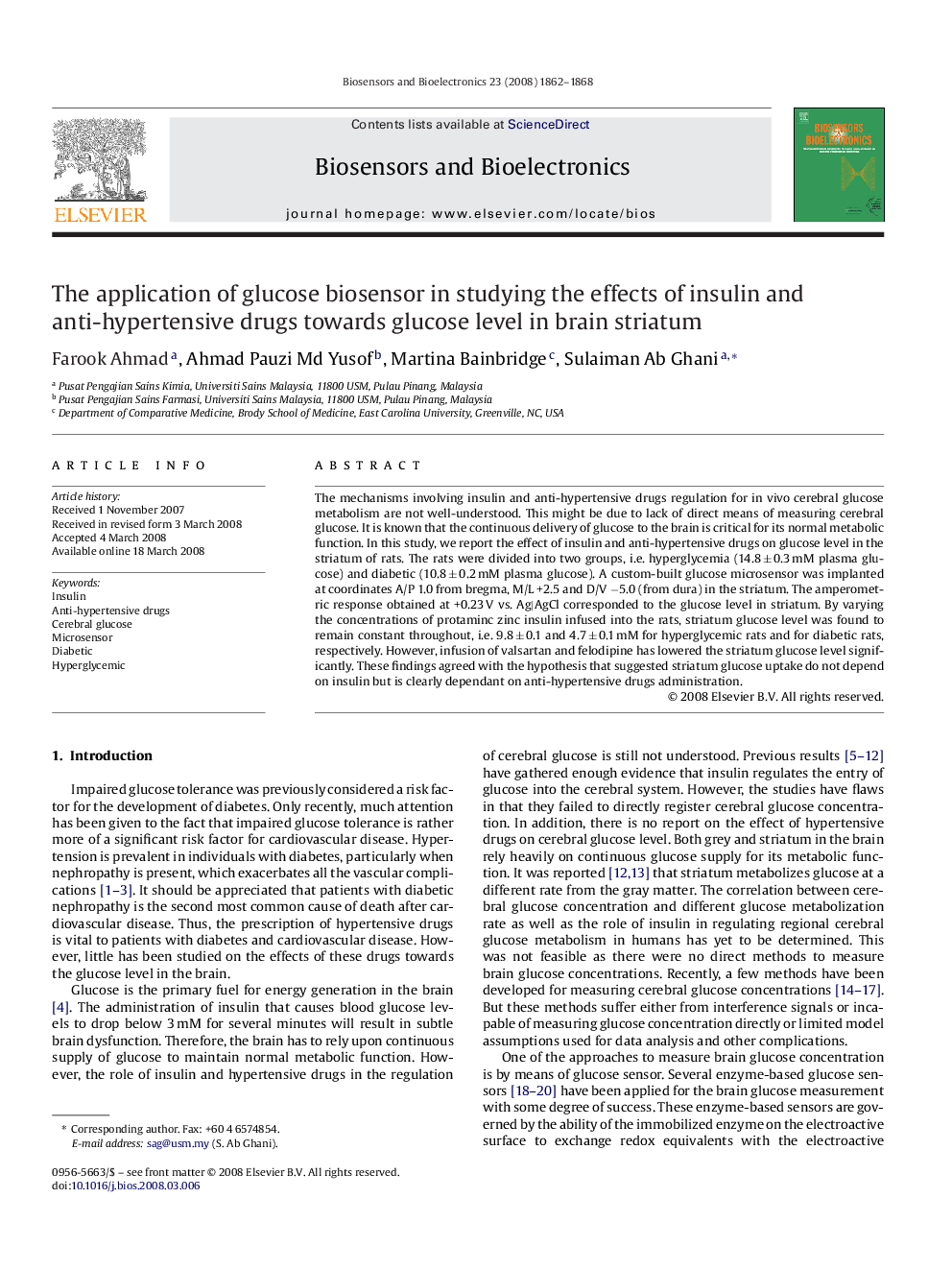| Article ID | Journal | Published Year | Pages | File Type |
|---|---|---|---|---|
| 869073 | Biosensors and Bioelectronics | 2008 | 7 Pages |
The mechanisms involving insulin and anti-hypertensive drugs regulation for in vivo cerebral glucose metabolism are not well-understood. This might be due to lack of direct means of measuring cerebral glucose. It is known that the continuous delivery of glucose to the brain is critical for its normal metabolic function. In this study, we report the effect of insulin and anti-hypertensive drugs on glucose level in the striatum of rats. The rats were divided into two groups, i.e. hyperglycemia (14.8 ± 0.3 mM plasma glucose) and diabetic (10.8 ± 0.2 mM plasma glucose). A custom-built glucose microsensor was implanted at coordinates A/P 1.0 from bregma, M/L +2.5 and D/V −5.0 (from dura) in the striatum. The amperometric response obtained at +0.23 V vs. Ag|AgCl corresponded to the glucose level in striatum. By varying the concentrations of protaminc zinc insulin infused into the rats, striatum glucose level was found to remain constant throughout, i.e. 9.8 ± 0.1 and 4.7 ± 0.1 mM for hyperglycemic rats and for diabetic rats, respectively. However, infusion of valsartan and felodipine has lowered the striatum glucose level significantly. These findings agreed with the hypothesis that suggested striatum glucose uptake do not depend on insulin but is clearly dependant on anti-hypertensive drugs administration.
